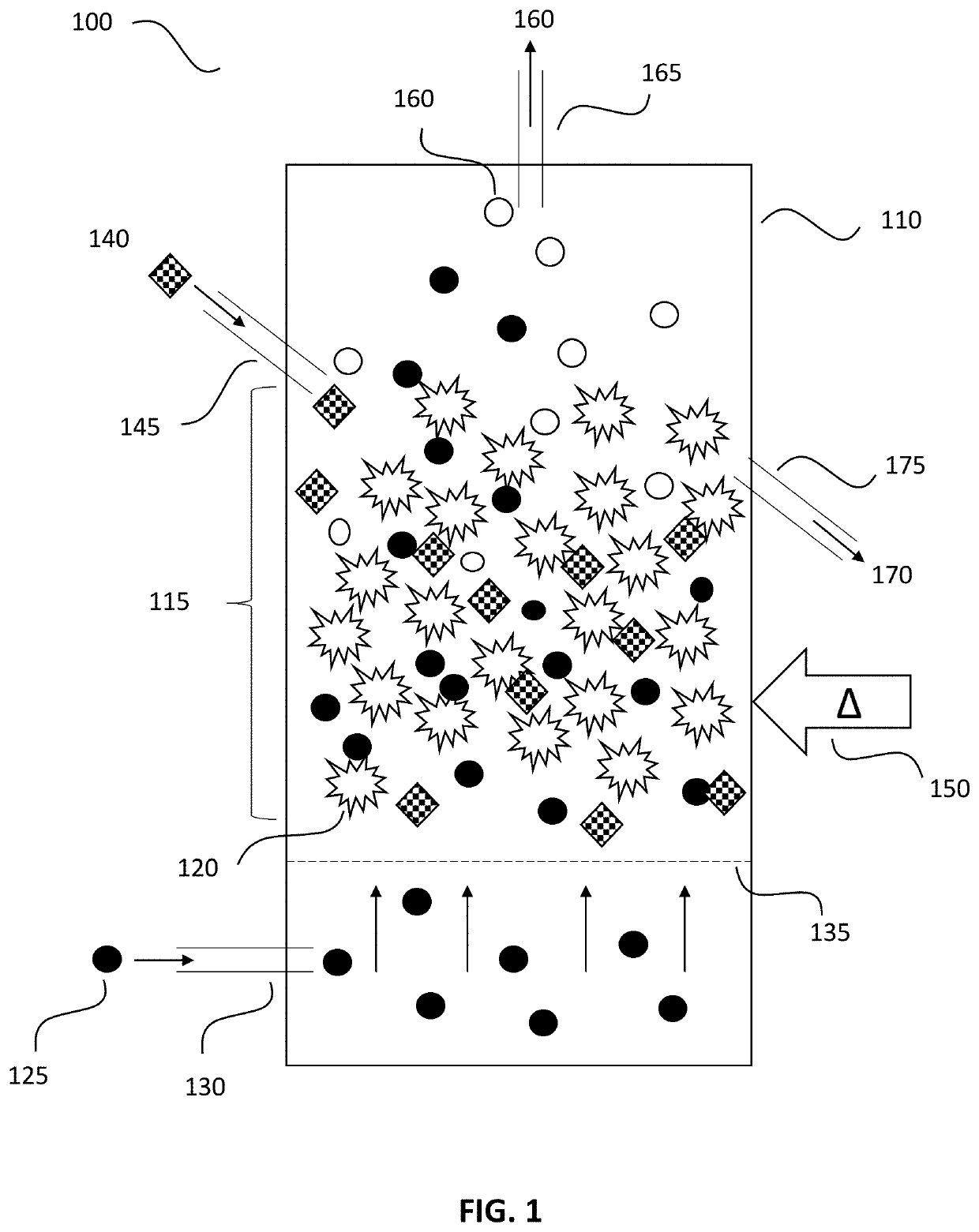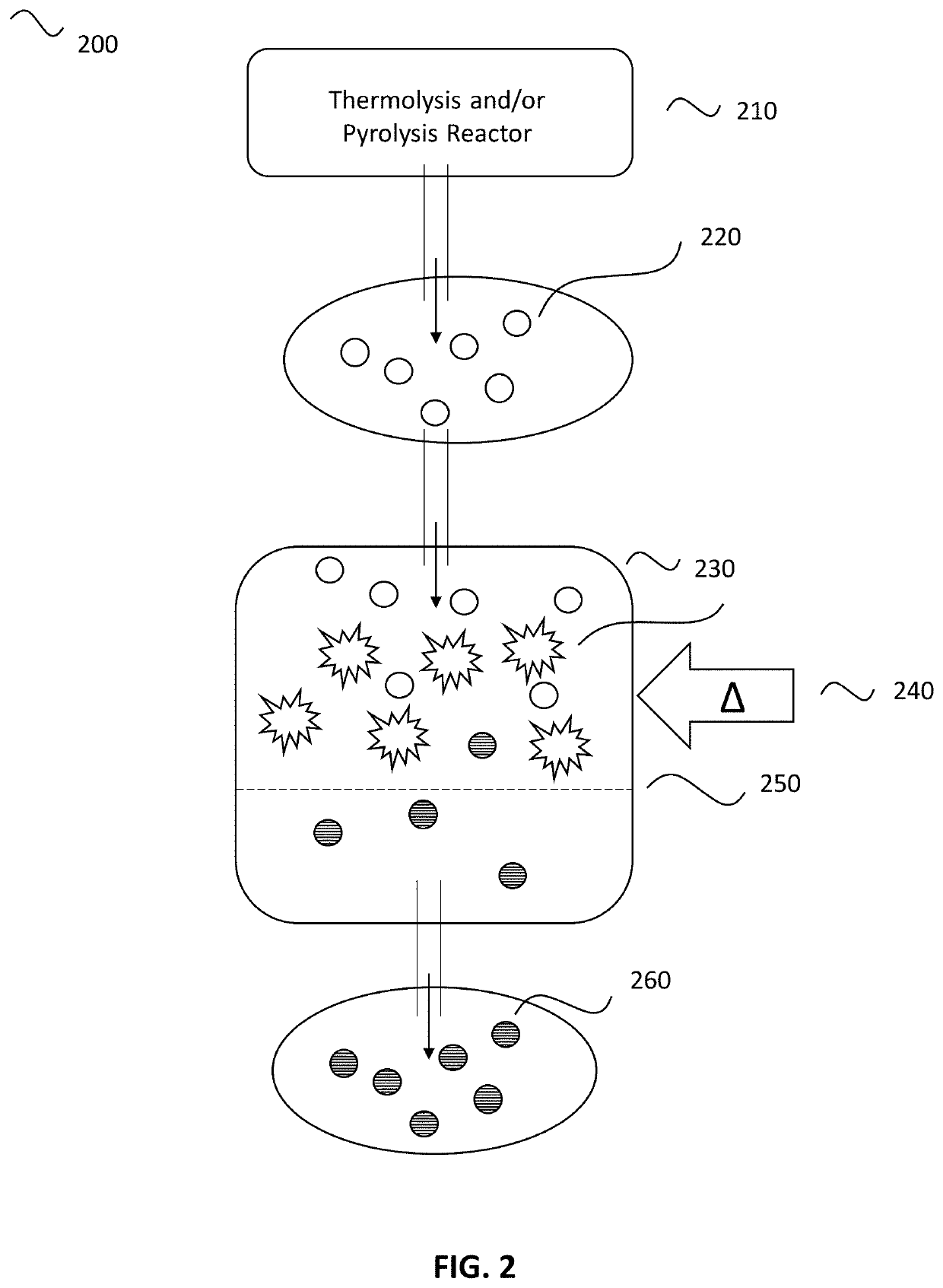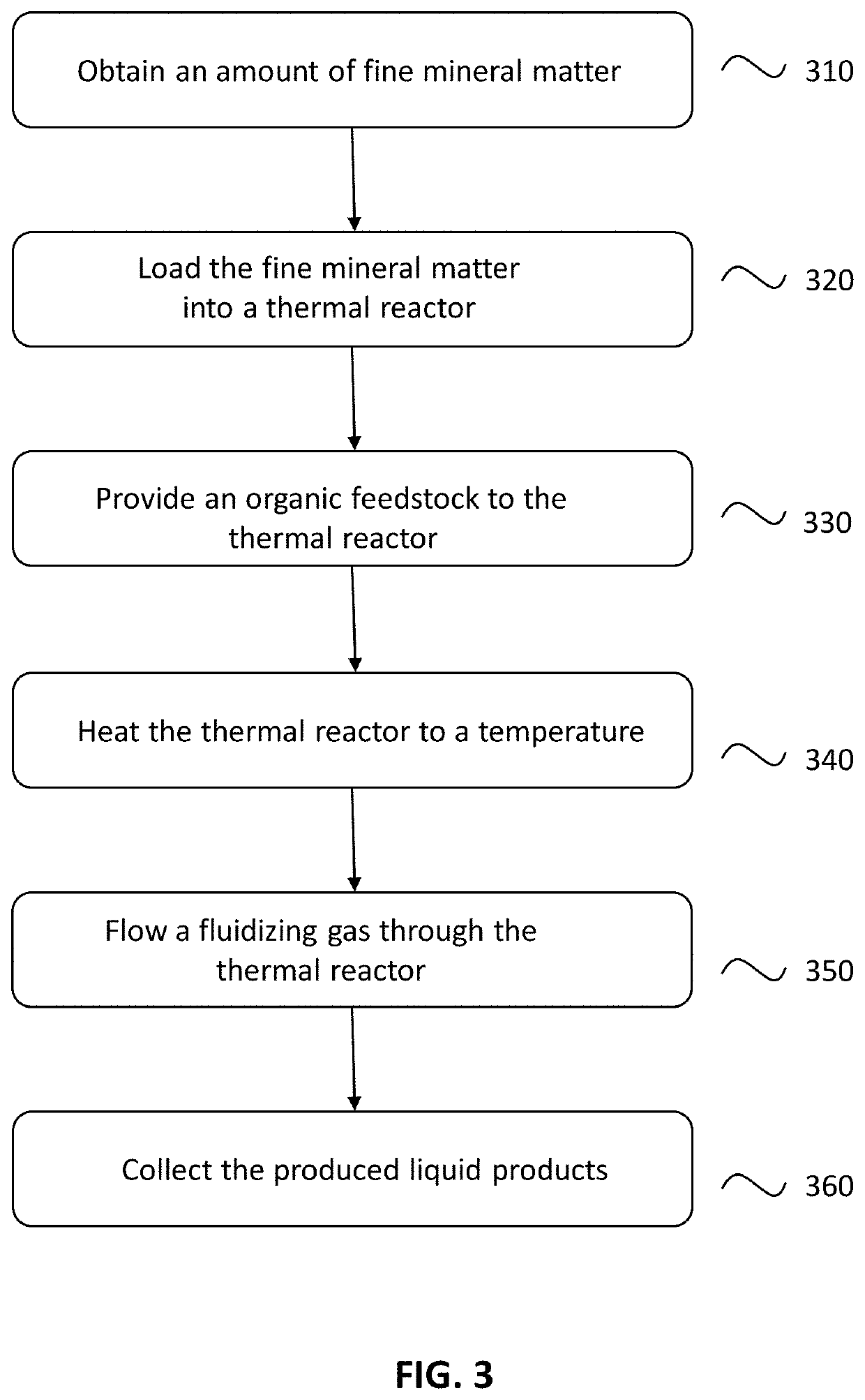Fine Mineral Matter for Upgrading the Quality of the Products of Thermal or Catalytic Cracking or in-Situ Heavy Oil Catalytic Cracking
a technology of catalytic cracking and mineral matter, which is applied in the direction of metal refining, combustible gas purification/modification, borehole/well accessories, etc., can solve the problems of waste disposal becoming problematic, the success of plastics is very rapid, and the effect of preventing or minimizing free radical polymerization
- Summary
- Abstract
- Description
- Claims
- Application Information
AI Technical Summary
Benefits of technology
Problems solved by technology
Method used
Image
Examples
example 1
[0137]For these experiments, low density polyethylene (LDPE) compounds were made by melt compounding of mixed polyethylenes, specifically 50% LDPE and 50% LLDPE stabilized with 0.15% of phenolic antioxidant (compounds #1 and #2, Table 5). Compound #2 is identical to compound #1 and additionally contains the embodiments of the present coal-derived mineral at 0.75%. Compounding was done at the temperatures 127 / 127 / 121 / 127 / 121 / 121 / 131 / 137° C., from feeder to the die, in a 16 mm Thermo Fisher Prism twin screw extruder with L / d 25:1.
[0138]FIG. 7 shows a plot of Lumipol-3 luminometer intensity versus time 710 for an isothermal scan of polyethylene (PE) mixed pellets without fine mineral matter mineral and with 0.75% of fine mineral matter (compounds #1 and #2), Lumipol-3. Compounded pellets and the 100 micron compression molded pressouts made from these pellets at 177° C. for 1 minute and 20,000 psi, were then ran in a Lumipol-3 luminometer isothermally in air at 190° C. The CL signal vs ...
example 2
[0140]In this experiment, the effect of the amount of fine mineral matter was investigated. LDPE based compounds were prepared with different amounts of the fine mineral matter. Compound #3 had 0.5%, and compound #4 had 3% of the same lot of the fine mineral matter. Both compounds additionally contained 0.2% of phenolic primary antioxidant.
[0141]Compounds #3 and #4 were compounded under the same conditions as Compounds #1 and #2, and the pressouts were made identically to the description in Example 1.
[0142]A more severe oxidation was induced during the CLA Tohoku luminometer testing. Oxygen was flown through the cell at the rate of 50 ml / min, while the oxidation temperature was still kept at 190° C. FIG. 8 shows a plot of the total emitted light (integrated CL signal) 810. The pressout with 3% of the mineral (compound #4) had the induction period 3.6 times longer than the pressout containing 0.5% of the mineral (compound #3). The data is also added to Table 5.
TABLE 5Summary of the C...
PUM
 Login to View More
Login to View More Abstract
Description
Claims
Application Information
 Login to View More
Login to View More - R&D
- Intellectual Property
- Life Sciences
- Materials
- Tech Scout
- Unparalleled Data Quality
- Higher Quality Content
- 60% Fewer Hallucinations
Browse by: Latest US Patents, China's latest patents, Technical Efficacy Thesaurus, Application Domain, Technology Topic, Popular Technical Reports.
© 2025 PatSnap. All rights reserved.Legal|Privacy policy|Modern Slavery Act Transparency Statement|Sitemap|About US| Contact US: help@patsnap.com



